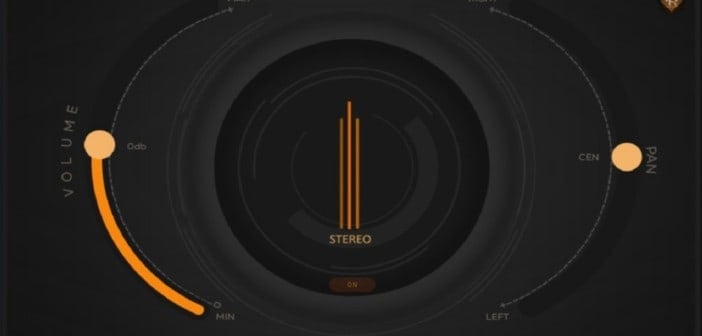RDG Audio offers Stage, a freeware gain staging and stereo enhancing plugin in VST3 and AU formats for macOS and Windows.
Stage is available via the RDG Audio website in AU and VST3 formats. Downloading is free, but there is an option to make a donation is feel so inclined.
See also: Waves OneKnob Wetter Is FREE @ BPB!It’s a simple but effective plugin with a simple GUI offering just a few controls. From left to right, you have a volume slider, mode selection, and a pan slider.
The mode selector gores through narrow, mono, stereo, normal, wider, and wider, all the way to super-wide. You can scroll through the modes by clicking and dragging the value up or down with some nice visual feedback representing your stereo image.
That’s pretty much it for controls, but at the top of the GUI, you’ll find a preset menu. You can save user presets and rename factory presets if it helps.
The progression through the modes starts at 0% (narrow) and ends at 200% (super-wide).
Obviously, the difference between those two points is pretty extreme, but the transition from start to finish is pretty smooth. What I mean is you won’t find yourself going from a relatively narrow setting to a wide, spacious, boomy sound with a slight adjustment; it has subtlety.
It’s fair to say that should be expected, but now and then, plugins progress through a range like it’s done in sections rather than one continuous movement. In which case, a slight movement can deliver annoyingly unpredictable results.
When it comes to gain staging, you can briefly summarise it as maintaining a suitable level and signal-to-noise ratio through each step of your signal path.
Working in your DAW with floating-point processing changes things a little because you can potentially push beyond 0 DBFS without any digital clipping. For example, if the track sitting above 0 DBFS is routed to another bus/destination and turned down there, there will be no clipping even if the track meter is hitting red.
In many ways, you have more freedom, but freedom sometimes leads to a messy workspace or even plugins struggling. It’s often best to think of your digital gain staging just as you would with analog; leave enough headroom at every stage without any messy routing, etc.
Something I didn’t consider enough in this process when I was a student is velocity.
I’d end up with spikes in my MIDI keyboard playing that cause clipping, or I’d stupidly level all velocities and lose any expression/dynamics. A rookie mistake, but I was a beginner, after all, so I thought I’d share for any newcomers out there.
Download: Stage (VST3 & AU plugin formats for Windows & macOS)
More articles:



2 Comments
Ble3azy
onSurely any plug-in worth its salt would be working in floating point by now. I mean cubase got floating point math back in the year 2000. I know it took ProTools a few years to catch up but I thought that had been the norm for a couple of decades now.
Sounds like snake oil someone mentioning this as a ‘feature’ just because some people might not know that basically all plugins have it, and all daws have had it since the pentium processor haha
makes me think its probably just another graphical nicety covering up a mid side fader.
Like saying our car is special because it uses a differential gear so send power to the wheels ” and then explaining how a differential works. when in fact all cars have them but those that didn’t know will suddenly be impressed.
Lets face it, we’ve not needed another widener since voxengo’s free stereo touch. that one is mono compatible and works on everything. just doesn’t look pretty.
Jeremias wandimba
onGostei do plugin